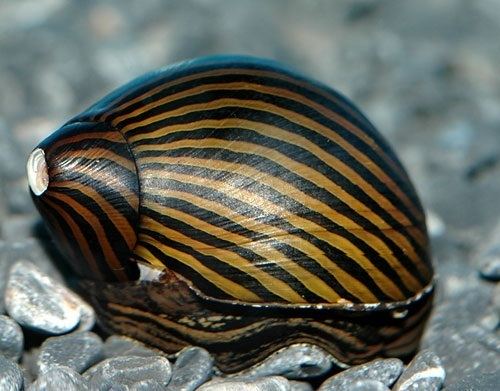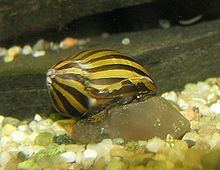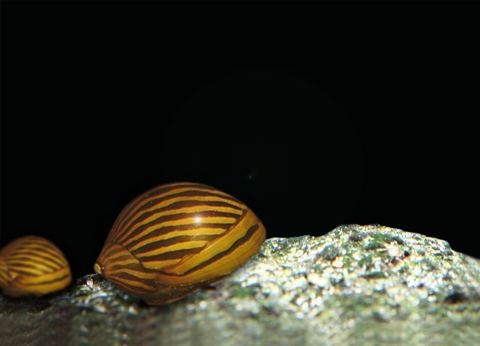Kingdom Animalia Family Neritidae Tribe Neritinini Scientific name Neritina natalensis Higher classification Theodoxus | Superfamily Neritoidea Subfamily Neritininae Genus Neritina Phylum Mollusca Rank Species | |
 | ||
Similar Neritina, Theodoxus, Neritidae, Clea helena, Clithon | ||
Neritina natalensis is a species of small freshwater snail with an operculum, an aquatic gastropod mollusk in the family Neritidae, the nerites. It returns to brackish waters to reproduce.
Contents

This is a popular aquarium snail, sold because it looks attractive and eats algae in freshwater tanks, but does not multiply under aquarium conditions. It requires a pH above 7.0 to thrive.

Neritina natalensis
Distribution

This species is endemic to the coastal plain of East Africa -- Kenya, Mozambique, Somalia, South Africa, and Tanzania. Its specific name natalensis refers to the region of Natal, South Africa.
Human use

This species is a common choice of algae-eating snail among freshwater aquarists. In the aquarium trade, the striped shell of this species has caused it to be known as the tiger snail, zebra snail, or zebra nerite. (The name zebra nerite is however misleading, because there are several species of nerite that have that common name, including Puperita pupa, a small marine nerite from the tropical western Atlantic.) The stripes in some individuals may display as zigzags, dashes or spots.
In an aquarium, the shell of this species grows to about 2.5 cm (one inch) in diameter. This snail prefers an aquarium temperature of 22 to 26 °C. The snail will venture to the top of the aquarium, and come out of the water from time to time, where it risks toppling off the frame and dying of desiccation.
